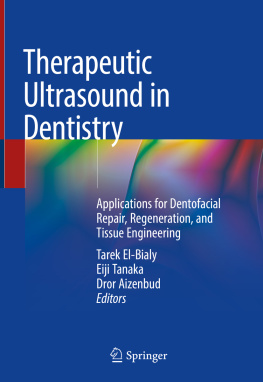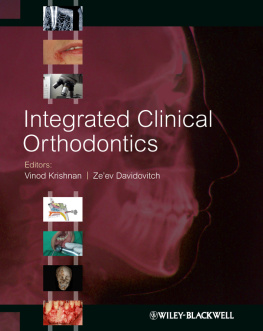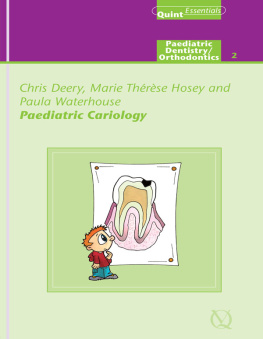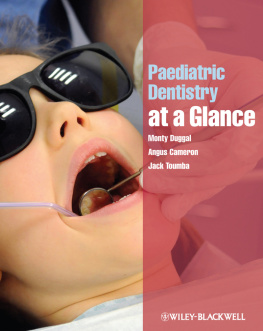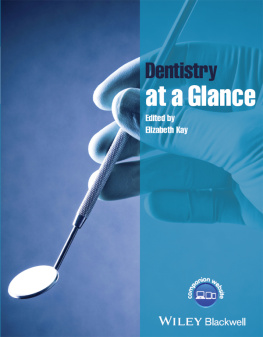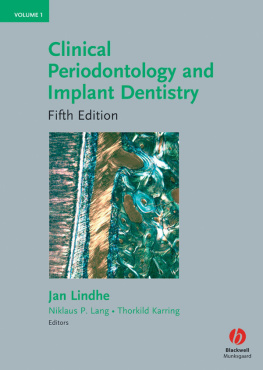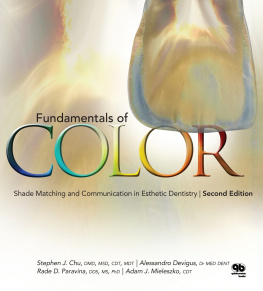Biodentine
Properties and Clinical Applications
1st ed. 2022

Logo of the publisher
Editor
Imad About
Aix Marseille University, CNRS, ISM, Institute of Movement Science, Marseille, France
ISBN 978-3-030-80931-7 e-ISBN 978-3-030-80932-4
https://doi.org/10.1007/978-3-030-80932-4
Springer Nature Switzerland AG 2022
This work is subject to copyright. All rights are reserved by the Publisher, whether the whole or part of the material is concerned, specifically the rights of translation, reprinting, reuse of illustrations, recitation, broadcasting, reproduction on microfilms or in any other physical way, and transmission or information storage and retrieval, electronic adaptation, computer software, or by similar or dissimilar methodology now known or hereafter developed.
The use of general descriptive names, registered names, trademarks, service marks, etc. in this publication does not imply, even in the absence of a specific statement, that such names are exempt from the relevant protective laws and regulations and therefore free for general use.
The publisher, the authors and the editors are safe to assume that the advice and information in this book are believed to be true and accurate at the date of publication. Neither the publisher nor the authors or the editors give a warranty, expressed or implied, with respect to the material contained herein or for any errors or omissions that may have been made. The publisher remains neutral with regard to jurisdictional claims in published maps and institutional affiliations.
This Springer imprint is published by the registered company Springer Nature Switzerland AG
The registered company address is: Gewerbestrasse 11, 6330 Cham, Switzerland
Acknowledgments
I wish to thank Springer for the fruitful collaboration on the project and for giving the opportunity to make it happen. My sincere thanks to the contributing authors for their thoughtful input, excellent contribution, and reactivity. I would also like to address my special thanks to the reviewers. Thanks to their expert evaluation, the peer-review process ran smoothly and allowed to further improve the content organization and presentation.
Introduction
Imad About
Taking advantage of tricalcium silicates biological effects, Biodentine has been designed as a bioactive bulk dentin substitute and as a temporary enamel replacement material. While the material has a short history being released in 2010, it raised a big interest in the dental and scientific communities. A testimony of this interest is the increasing number of publications in the scientific as well as the clinical fields, which appears to be ascribed to the material unique properties. Unlike other dentin substitutes, Biodentine application does not require any conditioning of the dentin surface, and the subsequent sealing is provided by micromechanical retention as Biodentine penetrates the dentin tubules forming tag-like structures.
Due to the technology used for its development, Biodentine is the only resin-free tricalcium silicate-based material which has high mechanical properties after a short setting time. Indeed, Biodentine mechanical properties after setting are close to those of the dentin, so that it can be cut and reshaped like the natural dentin. Additionally, Biodentine can be bonded with different types of adhesives before finishing the final restoration with a composite resin.
It is also important to highlight that the material sets upon hydration, a process which leads to ion/molecule release. These so-called by-products inhibit bacterial growth and interact with the underlying soft and hard tissues, leading to dampening of the inflammatory reaction and inducing tissue healing/regeneration.
Thus, given the number of published original manuscripts on Biodentine, the editor felt that it was time to put together the current knowledge on the material in this book in a synthetic manner by bringing together a combined knowledge from scientific and clinical research.
The content of this book reminds us of several facts: (1) that restorative materials are applied on injured/inflamed/infected tissues which do not behave in a similar way to that of healthy ones; (2) that the material is not inert but interacts with the underlying tissue modulating its inflammatory reaction and healing potential; (3) that the host tissue response needs to be taken into consideration. Indeed, dental tissues have a well-demonstrated healing potential thanks to the presence of stem cells, and recent data highlighted that pulp cells can even kill cariogenic bacteria and subsequently regulate the pulp inflammation. These facts constitute the scientific basis for understanding the recent paradigm shift in the way irreversible pulpitis is defined and treated. So, this book is unique in demonstrating how our scientific knowledge from the advanced material science and cell biology research combined with the material interaction with the underlying tissue can bring a significant change to the clinical practice.
The first part of the book (Chaps. provides insights on Biodentine effects on the inflammation control and on pain receptors expression and functional activity in vitro. This chapter also provides a link between the experimental data in vitro and an overview of clinical reports summarizing the current evidence on pain reduction in clinic with Biodentine.
The second part of the book (Chaps. describes its applications in furcation perforation and root resorption treatment, the last chapter reports on its application in regenerative endodontics/revitalization procedures.
The book is intended to be used as a guide for the scientific and clinical communities and to represent a solid backbone of knowledge on the material itself and on its clinical applications to all dental students, clinicians, and academics.
Contents
Josette Camilleri
Amre R. Atmeh and Timothy F. Watson
Matthias Widbiller , Charlotte Jeanneau , Kerstin M. Galler , Patrick Laurent and Imad About
Fionnuala T. Lundy , Thomas Giraud , Ikhlas A. El-Karim and Imad About
Avijit Banerjee and Montse Mercad
Sivaprakash Rajasekharan
Luc Martens and Rita Cauwels
Nessrin Taha and Papimon Chompu-inwai
Athina Bakopoulou , Anna Koutrouli and Imad About
Till Dammaschke and Mariusz Lipski
Kerstin M. Galler and Tatiana M. Botero
Contributors
Imad About
Aix Marseille University, CNRS, ISM, Institute of Movement Science, Marseille, France
Amre R. Atmeh
Department of Restorative Dentsitry, Hamdan Bin Mohammed College of Dental Medicine, Mohammed Bin Rashid University of Medicine and Health Sciences (MBRU), Dubai, United Arab Emirates
Athina Bakopoulou
Department of Prosthodontics, School of Dentistry, Faculty of Health Sciences, Aristotle University of Thessaloniki (AUTh), Thessaloniki, Greece
Avijit Banerjee
Cariology and Operative Dentistry, Centre for Oral Clinical Translational Sciences, Faculty of Dentistry, Oral and Craniofacial Sciences, Kings College London/Guys and St. Thomas Hospitals Trust, London, UK


